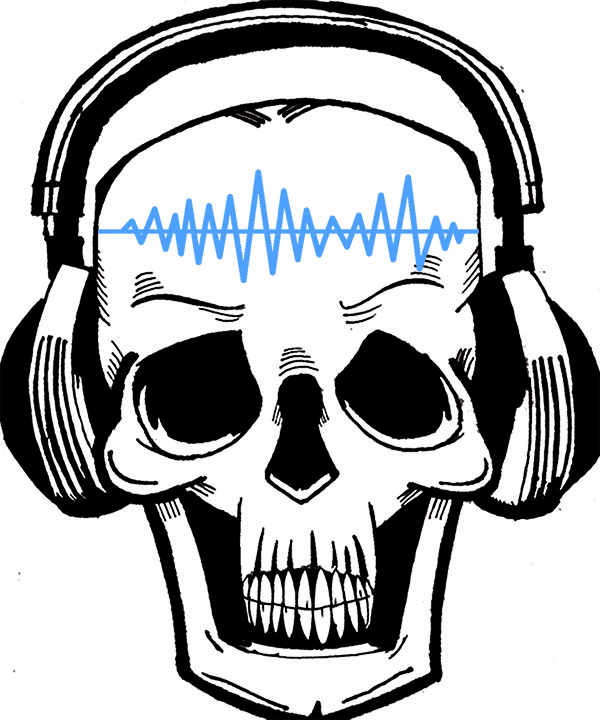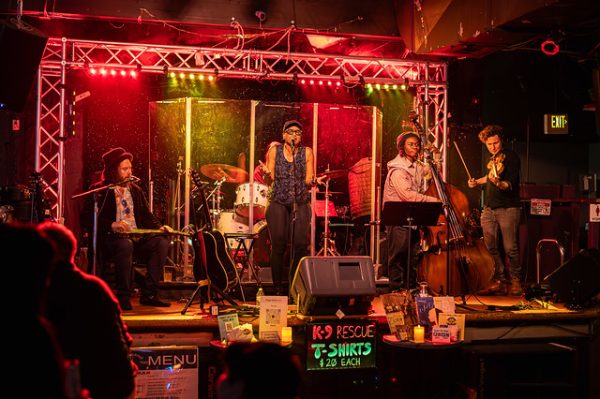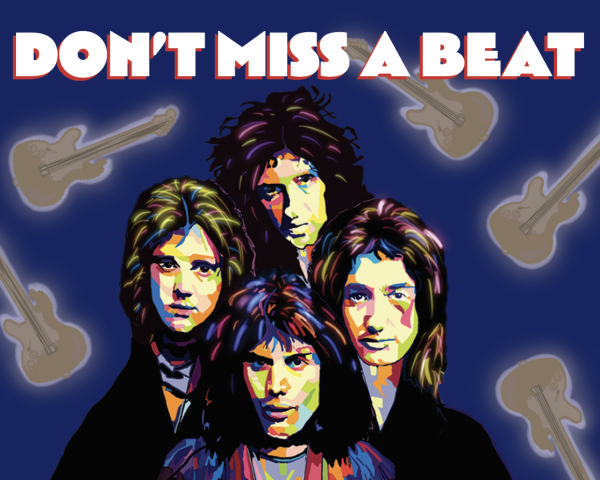The Rise of Binaural
As society progresses into the 21st century, the rise of virtual reality and 3D audio allows artists to explore and expand their perspectives in music.

A pair of black-mirrored 3D glasses lie at the entrance of a movie theater, ready to bring the pictures on the movie screen to life and enhance the viewer’s movie-going experience. Well into the 21st century, technology has advanced to the point where 3D visuals are a prevalent aspect of movie culture. Clunky computers from the 2000s have been replaced with high-speed Macbooks and old flip phones with multi-featured smartphones. Meanwhile, virtual reality has been developing at an exponential rate, opening up countless possibilities in the world of technology. Putting on a virtual reality headset allows one to transport themselves to a new place — perhaps to the front row of a live concert — and experience it first hand, all from the comfort of their own home. This type of experience, however, is not just visual stimulation, our technology has also advanced to stimulate auditory senses as well. When one puts on a pair of headphones with this new type of audio, it is almost as if the sounds are coming from all directions — essentially 3D sound.
Today, 3D sound has reached the point where it is making an appearance on platforms such as in Youtube videos, video games and music in order to enhance the viewers’ experience by making it more immersive and vivid.
Imagine putting on a pair of headphones and being transported to a stage; as you look to your left you spot a world-renowned musician performing next to you, and as you glance forward, a cheering crowd full of thousands of fans. With the rapid development of virtual reality and 3D audio, these fantasy settings are beginning to become reality. 3D audio is sound that is manipulated to instill the feeling of the place in which it was recorded. It is similar to how 3D video brings 2D screens to life, but is applied to sound and audio. Today, both of these features are being utilized in entertainment as popular artists including The Weekend, One Republic and Avicii have uploaded 360 degree view music videos, which, when paired with a virtual reality headset, allow viewers to have a full view of what it would be like to be in the video. Additionally, there are a variety of musical “playgrounds” available. These are video games where one can interact with various elements of the game and create different sounds. For example, if one puts on a virtual reality headset, they can swing their sensor sticks and virtually play the drums. Here, one can experiment with rhythm or sounds and create music.
Stanford computer science and music professor Ge Wang researches the connection between music and technology, and where it might take us in the near future. “I find virtual reality both potentially frightening and promising,” Wang said. He believes that virtual reality has the ability to completely change the direction that music takes. Through the internet, people can create new music without needing to interact or collaborate in person. Wang has already taken steps towards this idea through the development of an app called Ocarina. By combining aspects of music and internet, Ocarina makes it possible to play a virtual flute or listen to other people around the world play the instrument in real time. On a global scale, people can collaborate on and create music through the app, which can be extended and deepened for more complex interactions between people in the future.
Although the improvements that virtual reality can provide in society are immense, the implication for the music industry are not positive. For exmaple, if everyone starts to watch sporting events in virtual reality, people will start to gravitate away from attending live sporting events and television sports channels will start to deterioate with it. For people who are too busy to take time out of their day to go to a live event, the idea of virtually attending sounds more appealing and simple than commuting through traffic and crowds of people.
Another tool used to create 3D audio is binaural sound, a technology that uses a specific type of microphone to capture sound the same way our ears do. The sound input bounces off the ear-shaped mic the same way sound waves ricochet off our ears, simulating real life sound experiences. “Much of it follows the physics, the science of sound,” Wang said.
With binaural sound making its way into virtual reality and the music industry, the way sound is treated and recognized will start to change as it adapts to the world of 3D audio.
The rise of virtual reality has opened countless possibilities for the music industry. Some musicians have taken advantage of this new technology by re-creating and recording concerts with 360-degree video; however it is only recently that 3D sound has gone mainstream.
According to Vice Media, Soundcloud artists have experimented with 3D sound for many years, through audio or in Vimeo video. On the other hand, mainstream artists have neglected to add layers to their music, opting to produce the same 2D sound heard through headphones, as it is less expensive. Just as virtual reality has paved the way for people to closely experience other worlds with their visual sense, the use of 3D sound allows listeners to feel as if they are at the artist’s live concert or sitting in the recording studio with them playing just a couple of feet away. With this kind of virtual application, artists are able to create their music in an abstract way, and appeal to a new audience of listeners. Abstraction in music videos, with shapes and colors, is a completely different style than the music videos artists have produced within the last few years, and the rise of virtual reality allows artists to explore the new genre and create unique content.
As the use of 3D sound and virtual reality increases in popularity and musicians are able to add dimension and depth to their recorded audio, the engaging and exciting experience of live performances will become more accessible to everyone. Though the atmosphere and hype around live concerts may not change, it will allow those who are unable to physically attend to experience the opportunity.
Art by Leon Lau






